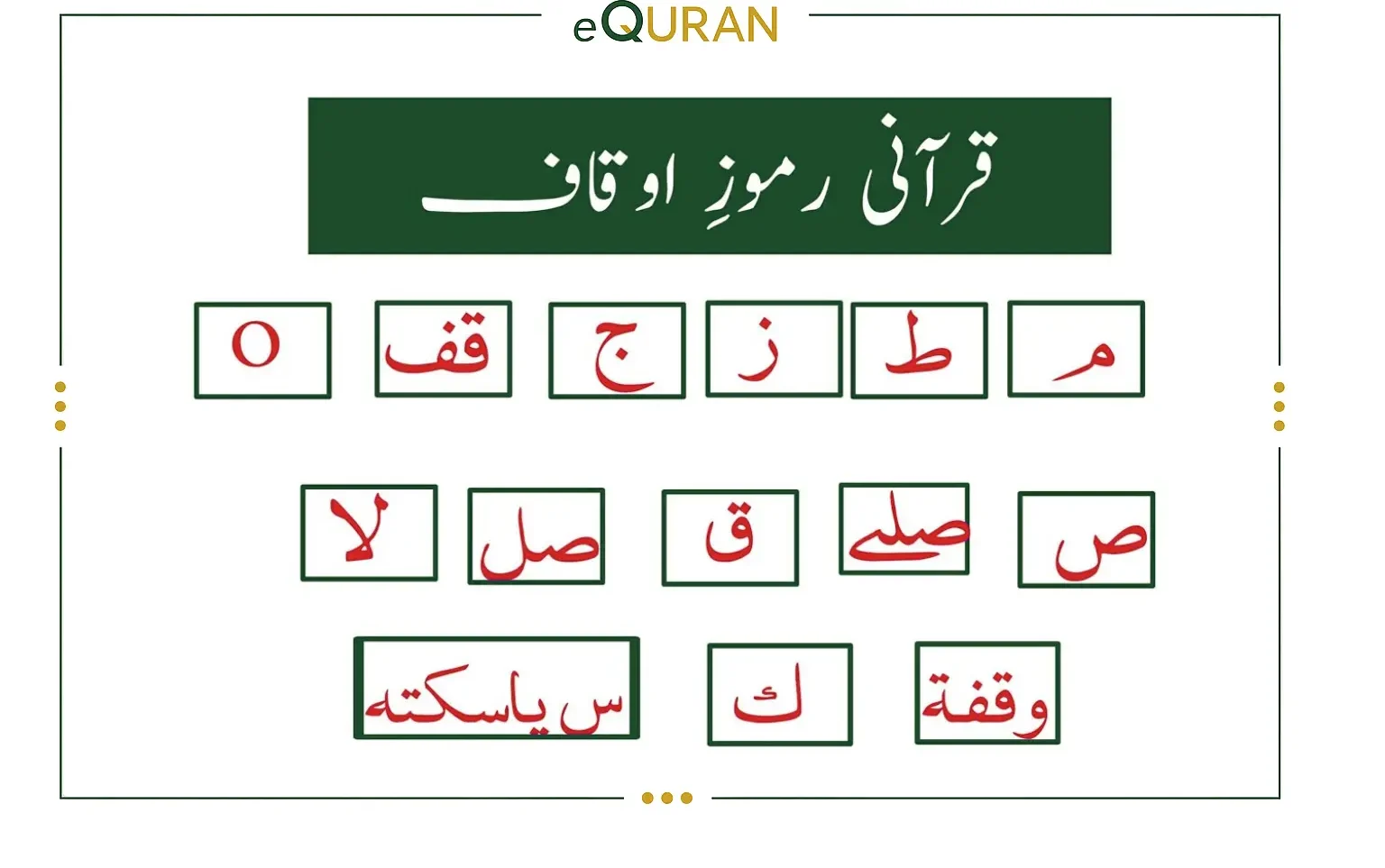Rules of Stopping (Ramooz-e-Auqaf) in the Holy Quran
What are the rules for stopping (Waqf) in the Quran?
Pause symbols, known as Ramooz-e-Auqaf or Waqf Symbols, are the Quran’s unique punctuation marks. They guide readers on where to stop, pause briefly, or recite without interruption. Developed by scholars through meticulous research into Quranic grammar and style, these symbols preserve the divine message’s rhythm and meaning. Ignoring them risks altering the Quran’s context or distorting its teachings.

Why Are the Ramooz-e-Auqaf Important?
Types of Pause Symbols and Their Meanings
Below are the key symbols categorized by their rules, with clear instructions for recitation:
Mandatory Pauses (Must Stop)
- (End of Ayah):
- Meaning: Marks the end of a verse.
- Rule: Must stop here.
- م (Meem):
- Meaning: Obligatory pause.
- Rule: Stopping is required to avoid altering meaning.
- ط (Taa):
- Meaning: Necessary stop.
- Rule: The sentence’s logic concludes here.
Optional or Recommended Pauses
- ج (Jeem):
- Meaning: Marks the end of a verse.
- Rule: Must stop here.
- ص (Saad):
- Meaning: Better to pause.
- Rule: Preferred for clarity.

Prohibited Pauses (Do Not Stop)
- لا (La):
- Meaning: Forbidden pause.
- Rule: Never stop; it breaks the sentence’s meaning.
- صل (Sila):
- Meaning: Continue reciting.
- Rule: Do not pause.
Conditional or Special Pauses
- ز (Zaa):
- Meaning: Better to continue.
- Rule: Only pause if necessary.
- ق (Qeela):
- Meaning: Refers to a quoted phrase.
- Rule: Avoid pausing.
- قف (Qif):
- Meaning: Required stop.
- Rule: Pause here.
- س (Saktah):
- Meaning: Brief pause without breath.
- Rule: Stop momentarily for clarity.
- وقفة (Waqfah):
- Meaning: Slightly longer pause than س.
- Rule: Pause without breathing, often between linked phrases.
| Pause Symbol | Name | Type | Meaning | Rule |
|---|---|---|---|---|
| | End of Ayah | Mandatory Pause (Must Stop) | Marks the end of a verse | Must stop here |
| م | Meem | Mandatory Pause (Must Stop) | Obligatory pause | Stopping is required to avoid altering the meaning |
| ط | Taa | Mandatory Pause (Must Stop) | Necessary stop | The sentence’s logic concludes here |
| ج | Jeem | Optional/Recommended Pause | Optional pause | Pausing is permissible but not required |
| ص | Saad | Optional/Recommended Pause | Better to pause | Preferred for clarity |
| لا | Laa | Prohibited Pause (Do Not Stop) | Forbidden pause | Never stop; it breaks the sentence’s meaning |
| صل | Sila | Prohibited Pause (Do Not Stop) | Continue reciting | Do not pause |
| ز | Zaa | Conditional/Special Pause | Better to continue | Only pause if necessary |
| ق | Qeela | Conditional/Special Pause | Refers to a quoted phrase | Avoid pausing |
| قف | Qif | Conditional/Special Pause | Required stop | Pause here |
| س | Saktah | Conditional/Special Pause | Brief pause without breath | Stop momentarily for clarity |
| وقفة | Waqfah | Conditional/Special Pause | Slightly longer pause than س | Pause without breathing, often between linked phrases |
Final Thoughts
Ramooz-e-Auqaf aren’t just marks on a page. They guide us to pause where needed and continue where it’s best. Learning them brings the Quran’s message to life with the rhythm it deserves. Whether you’re a parent helping your child or an adult learning yourself, these signs help you recite with care. In our online Quran classes with Tajweed for kids & adults, we start with essential pauses, avoid forbidden stops, and build up to the advanced rules — step by step, with meaning.






